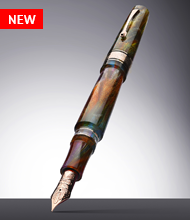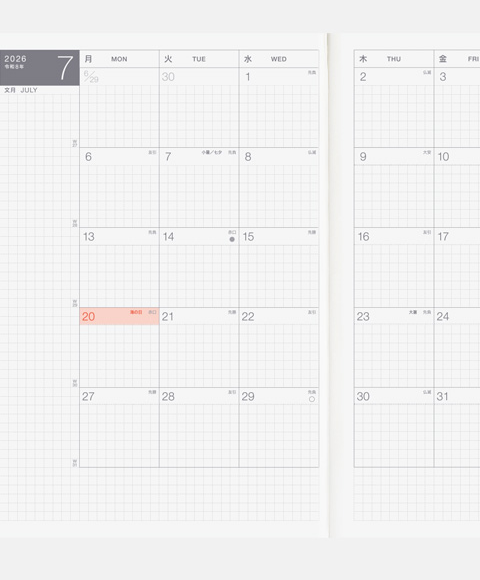A fountain pen is no ordinary pen. The way it effortlessly glides across a paper is not by accident. A fountain pen is meant to function and operate very differently than, say, your basic rollerball pen. It’s on purpose and by design.
Do you know why? Do you know how? It is helpful to understand the inner workings of a fountain pen to be able to best utilize its unique capabilities. Knowing how a fountain pen comes together is an excellent way to troubleshoot any problems you might encounter. With that said, let’s begin your Fountain Pen 101 Anatomy Course.

Buy Product
Benefits of a Fountain Pen
Many writing instrument enthusiasts love that a fountain pen does not fatigue the hand as quickly as other pens can and will. This is because you do not need to press as hard to write with a fountain pen. Less pressure means less pain in your hand and wrist. Say goodbye to hand cramps.
Fountain pens are also known to improve handwriting skills. They can transform your writing experience altogether, not just because a fountain pen allows you to write for longer periods of time with less fatigue but also because ink directly flows out of the pen’s nib.
What is a Nib?
The nib is the pointed part at the end of a pen that touches the paper. Fountain pen nibs come in different sizes, including extra fine, fine, medium, and broad. Each size produces a different line thickness. Those with small handwriting typically prefer a fine nib. If you want to increase the width of a line, a broad nib is more suitable.
The nib has a slit down the center of it, which is very important to understand how it works. When you drag the nib across the paper, the ink is pulled down that center slit and down the feed by capillary action. There’s a scientific explanation behind it. To sum it up, capillary action is a phenomenon involving the ability of that liquid to flow through narrow spaces. The force of gravity also plays a part in how the ink flows from the pen's reservoir and onto the paper.
Where is the Reservoir?

The reservoir is the tube of ink stored in the pen’s handle or the back portion of the pen, referred to as the barrel. The barrel is the main body of the pen that houses the ink. There is an intermediary part of the pen between the nib and barrel known as the grip section. The grip section is where you hold the pen while writing. It also connects the nib and feed to the body.
Why a Feed Channel?
When you buy a fountain pen, you will be able to physically see the importance of the feed channel. The feed gets the ink to the nib. The ink travels down the feed channel - a slit that leads to the front of the pen. The feed is also made up of fins that act as regulators. The fins hold extra ink. If you are writing faster and need more ink than the feed channel can supply, the ink stored in the fins help keep up with ink demand and allow for a continuous flow.
The Function of a Pen Cap
A fountain pen contains liquid, oil or water-based ink. Due to the natural nature of water, it can dry up. Yep, the water in your fountain pen ink can dry out if the cap is not properly used. The cap seals out air to protect your ink and covers your nib. Fountain pen nibs need protecting. The pen cap can either screw on or click into place, depending on the design of the pen.
Don’t Forget About the Clip
While it may seem obvious, the clip is another fountain pen term to know. It serves both a functional and decorative purpose. The clip is attached to the cap and is the part you use to secure the pen in your shirt pocket. A fountain pen can also roll around when on a hard, flat surface. Simply put on the cap, and that attached clip makes sure the pen cannot roll away. After all, you don’t want your pen falling nib down on the ground without a cap.

Education is Key
That wraps up your crash course on fountain pens.
The more you know, the better off you will be. Understanding the purpose of each part of the fountain pen helps you know how to better choose and use this extraordinary writing instrument. Furthermore, if your pen needs repair, you can better recognize the part that is giving you issues. Hands down, educating yourself about the inner make-up of a fountain pen is critical and beneficial to your overall writing experience.





















2 comments
RUTH FEIERTAG
What a useful overview of what makes fountain pens special and of how they work. I confess that, even after decades of using fountain pens, I still sometimes forget the terminology and am always grateful for refresher.
What a useful overview of what makes fountain pens special and of how they work. I confess that, even after decades of using fountain pens, I still sometimes forget the terminology and am always grateful for refresher.
Frank Luongo
Nice short informative discussion , including diagrams , about the basics of a fountain pen.
Clearly written. Must have knowledge for those who use and enjoy writing with fountain pens.
Nice short informative discussion , including diagrams , about the basics of a fountain pen.
Clearly written. Must have knowledge for those who use and enjoy writing with fountain pens.